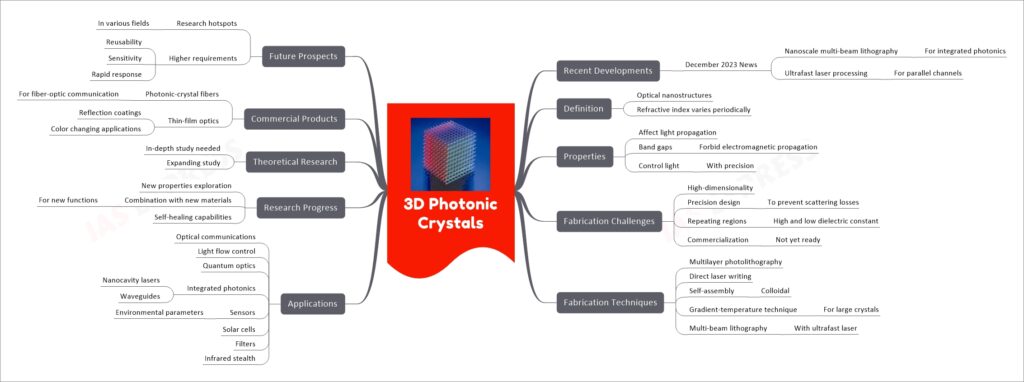3D Photonic Crystals
3D photonic crystals are optical nanostructures with a periodically varying refractive index, which affects the propagation of light by creating band gaps that forbid electromagnetic propagation. The precision required in their design to prevent scattering losses and the need for repeating regions of high and low dielectric constant make their fabrication challenging. Techniques such as multilayer photolithography, direct laser writing, self-assembly, and multi-beam lithography with ultrafast lasers are used in their fabrication. Applications of 3D photonic crystals span across optical communications, light flow control, quantum optics, and integrated photonics, including nanocavity lasers and waveguides. They are also used in sensors, solar cells, filters, and infrared stealth technologies. Theoretical research is necessary for an in-depth understanding and exploration of new properties, and the combination with new materials may lead to new functions. While photonic-crystal fibers and thin-film optics are already in commercial use, the full potential of 3D photonic crystals is yet to be realized. Recent developments in December 2023 include advances in nanoscale multi-beam lithography for integrated photonics and ultrafast laser processing for creating parallel channels. The future prospects of 3D photonic crystals lie in becoming research hotspots with higher requirements for reusability, sensitivity, and rapid response in various fields.
If you like this post, please share your feedback in the comments section below so that we will upload more posts like this.


